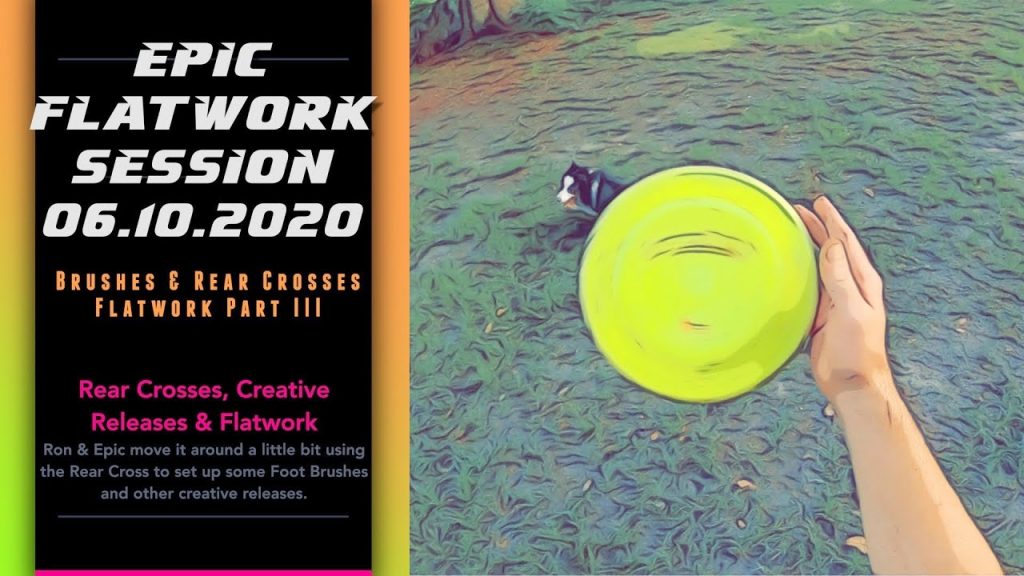
Session Recap | Epic Flatwork & Flow Jam 06.10.2020 Part III
Today’s session featured the same throws, a Footbrush and that Weightless throw, but the lines were set up with a Rear Cross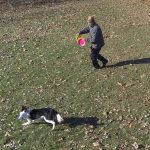 On a Rear Cross, the dog switches Flanks with the behind her. From clock to counter clockwise Flank or vice versa. Taken directly from the canine agility world, the Rear Cross is a... More. The Rear Cross
On a Rear Cross, the dog switches Flanks with the behind her. From clock to counter clockwise Flank or vice versa. Taken directly from the canine agility world, the Rear Cross is a... More. The Rear Cross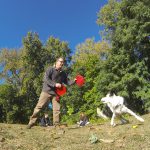 A Cross is an canine agility term that describes a change of working sides. Your dog moves from your left to your right (Heel to Side) or from Clock to Counter. Crosses are... More set up provides a little more control than the Front Cross
A Cross is an canine agility term that describes a change of working sides. Your dog moves from your left to your right (Heel to Side) or from Clock to Counter. Crosses are... More set up provides a little more control than the Front Cross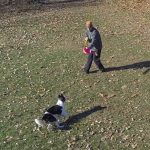 On a Front Cross, your dog switches Flanks in with you in front of them. From Clock to Counter Clockwise Flank or vice versa. Taken directly from the canine agility world, the Front... More, but timing these throws was still a tough proposition.
On a Front Cross, your dog switches Flanks in with you in front of them. From Clock to Counter Clockwise Flank or vice versa. Taken directly from the canine agility world, the Front... More, but timing these throws was still a tough proposition.
 Out to the side of the handler is the Flank. If the dog is out to the handler's right or left the dog is on Flank. If the dog is moving with the... More and the Weightless throw for the Counter Clockwise Flank using the Rear Cross to set the lines. This is the third installment of Epic Flatwork
Out to the side of the handler is the Flank. If the dog is out to the handler's right or left the dog is on Flank. If the dog is moving with the... More and the Weightless throw for the Counter Clockwise Flank using the Rear Cross to set the lines. This is the third installment of Epic Flatwork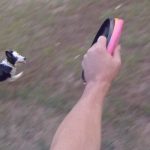 Flatwork is the stuff that happens between the catches. How the team moves and transitions, often without the disc, is flatwork. Flatwork concepts in disc dog are taken from the agility and herding... More Sessions featuring these throws. Check out Part I and Part II if you like…
Flatwork is the stuff that happens between the catches. How the team moves and transitions, often without the disc, is flatwork. Flatwork concepts in disc dog are taken from the agility and herding... More Sessions featuring these throws. Check out Part I and Part II if you like…Rear Cross for Flexible Timing
I’m not sure if it’s the innate flexibility of the Rear Cross or the experience gained from working a few of these sessions over the last couple days, but delivering the throws was quite a bit easier today.
The Rear Cross has a bit more flexibility than the Front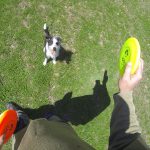 Front is a stable position directly in front of the handler. Front is an traditional obedience skill. Usually your dog sits in this position, but standing is often acceptable as well, especially in... More Cross. With the Rear Cross you can put the dog behind the play, and pull him along. Being in front of the dog allows the dog to get the jump on you or push through while you’re working to deliver the throw. Both of these throws have a long delivery time and are fairly complex due to the multi-part throwing mechanics – not only do you have to turn and throw, but you’ve got to turn and throw before you throw.
Front is a stable position directly in front of the handler. Front is an traditional obedience skill. Usually your dog sits in this position, but standing is often acceptable as well, especially in... More Cross. With the Rear Cross you can put the dog behind the play, and pull him along. Being in front of the dog allows the dog to get the jump on you or push through while you’re working to deliver the throw. Both of these throws have a long delivery time and are fairly complex due to the multi-part throwing mechanics – not only do you have to turn and throw, but you’ve got to turn and throw before you throw.
The additional time required for the dog to turn after passing the handler allows for more time and flexibility in setting up. That is, if the handler sends the dog and the dog performs a proper Rear Cross.
Creating a Lobe With the Rear Cross | 1:15
In the middle of the video (1m15s), there’s an overlay while I’m talking to Jack about having some trouble timing the throw and that the throw is easier if I can create a “Lobe” on the Rear Cross with Epic.
This Lobe concept can be both helpful and harmful in your flatwork; like most nuanced expressions of technique, there is a time and a place…
To create a lobe on a Rear Cross requires that the Rear Cross be proper. A proper rear cross has both a send AND a turn. Most handlers and teams only turn or flip the dog, performing the skill without sending the dog past the handler. This lack of a send often turns the Rear Cross into a Spin or a Twist and makes the skill happen more quickly and automagically.
When the Rear Cross is done as a Spin or a Twist, the dog kind of spins out or skids, performing a 360-ish movement instead of an arcing turn. This spinning out or skidding movement makes the Rear Cross happen really fast and removes a bunch of the flexibility that is built into the Rear Cross and makes reading the dog and timing a throw a bit more difficult. Of course, you can always rush the dog and whip it out in front to set the line, but if you want that groovy team movement and flowing flatwork or want to make a complex throw that has a long delivery, you might be in trouble…
To create a lobe on your Rear Cross, just be sure to send the dog and maybe pull a little bit around as the dog hooks up with you on the Flank. Once the dog hooks up and commits to the send, you’ll have some additional time to make the throw.
A Little Giz Gaz Action | 3:09
I was a bit surprised in the middle of the session to be comfy enough to work a Giz Gaz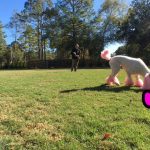 The Giz Gaz is like the opposite of a Zig Zag. A Zig Zag moves agressively in a straight line from left to right and right to left (clock and counter) in front... More. Dueling Rear Crosses was not on the agenda for this session, and I wouldn’t have expected to pull it off. It was a pleasant surprise and speaks to some additional confidence from working the skill a few sessions in a row with an Epic little dog…
The Giz Gaz is like the opposite of a Zig Zag. A Zig Zag moves agressively in a straight line from left to right and right to left (clock and counter) in front... More. Dueling Rear Crosses was not on the agenda for this session, and I wouldn’t have expected to pull it off. It was a pleasant surprise and speaks to some additional confidence from working the skill a few sessions in a row with an Epic little dog…
What’s Next With These Sessions?
Next"Next" encapsulates the dog's anticipation of a forthcoming reward, sparking motivation and excitement. This expectancy creates a driving force that propels the dog through training, forming a continuous loop of engagement. When "Next"... More up is tightening up the throws. The Footbrush needs a bit more spin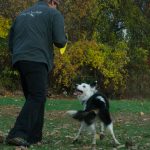 Spins and Twists are tricks where the dog spins 360 degrees in a clockwise or counter clockwise fashion. Spin is clockwise and Twist is counter clockwise so it is important to have a... More and stability, and I need to find a comfy place to start the Weightless toss.
Spins and Twists are tricks where the dog spins 360 degrees in a clockwise or counter clockwise fashion. Spin is clockwise and Twist is counter clockwise so it is important to have a... More and stability, and I need to find a comfy place to start the Weightless toss.
The setting of the throw up into my hand, where I set it spinning, is not very consistent. I have not really chosen a specific spot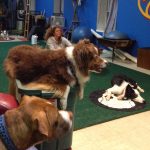 Spot is a “go to a place”, or “go to a mat” behavior. This means that the dog seeks out and performs a duration behavior on a spot of the handler’s choosing. A... More yet. I’m leaning towards setting it a bit further behind me than normal – if you watched all 3 sessions real close you might be able to see that in Session III I’m throwing the disc a bit further behind my shoulder than in Sessions I & II. I think this adds a bit of flexibility in terms of placement as I can articulate my body a bit more. When I try to make the throw from in front of the shoulder I’m a bit chicken winged or pigeon holed into a single direction.
Spot is a “go to a place”, or “go to a mat” behavior. This means that the dog seeks out and performs a duration behavior on a spot of the handler’s choosing. A... More yet. I’m leaning towards setting it a bit further behind me than normal – if you watched all 3 sessions real close you might be able to see that in Session III I’m throwing the disc a bit further behind my shoulder than in Sessions I & II. I think this adds a bit of flexibility in terms of placement as I can articulate my body a bit more. When I try to make the throw from in front of the shoulder I’m a bit chicken winged or pigeon holed into a single direction.
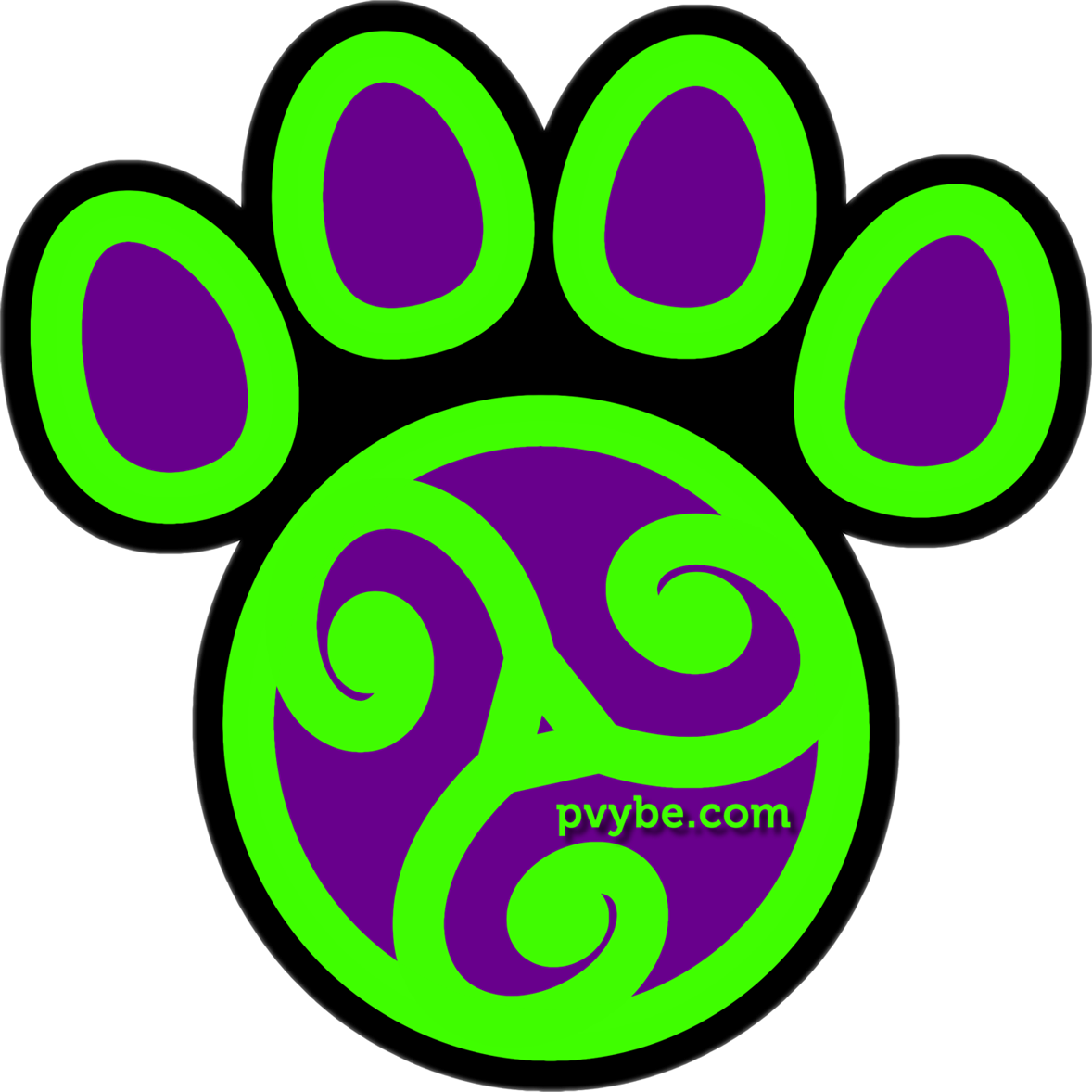


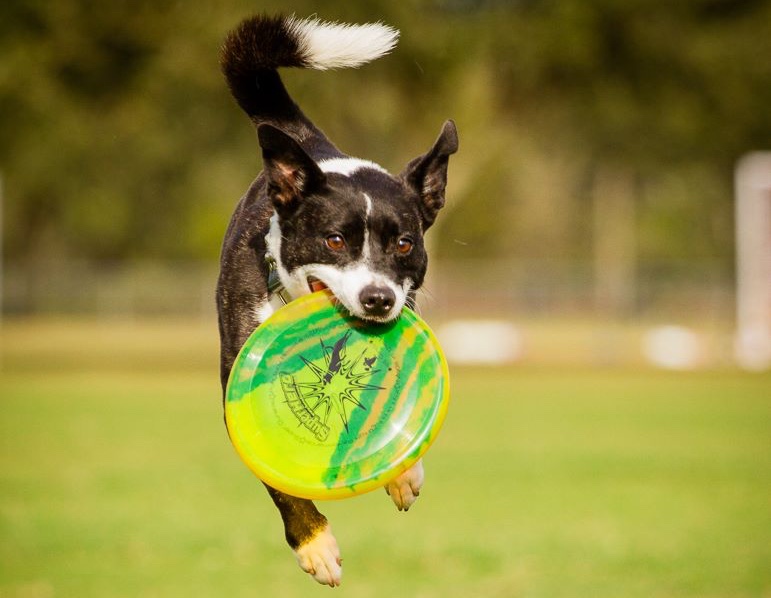

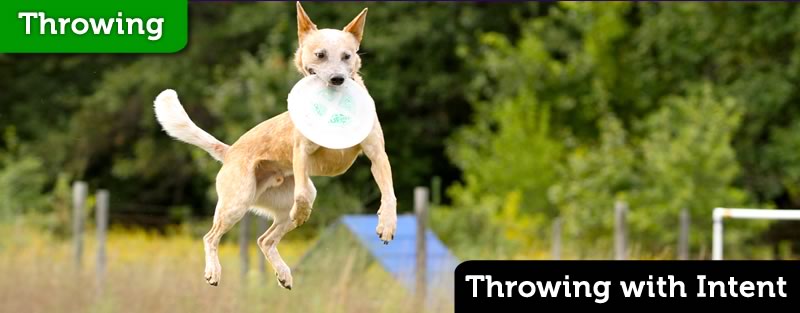
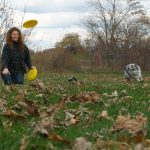
Responses